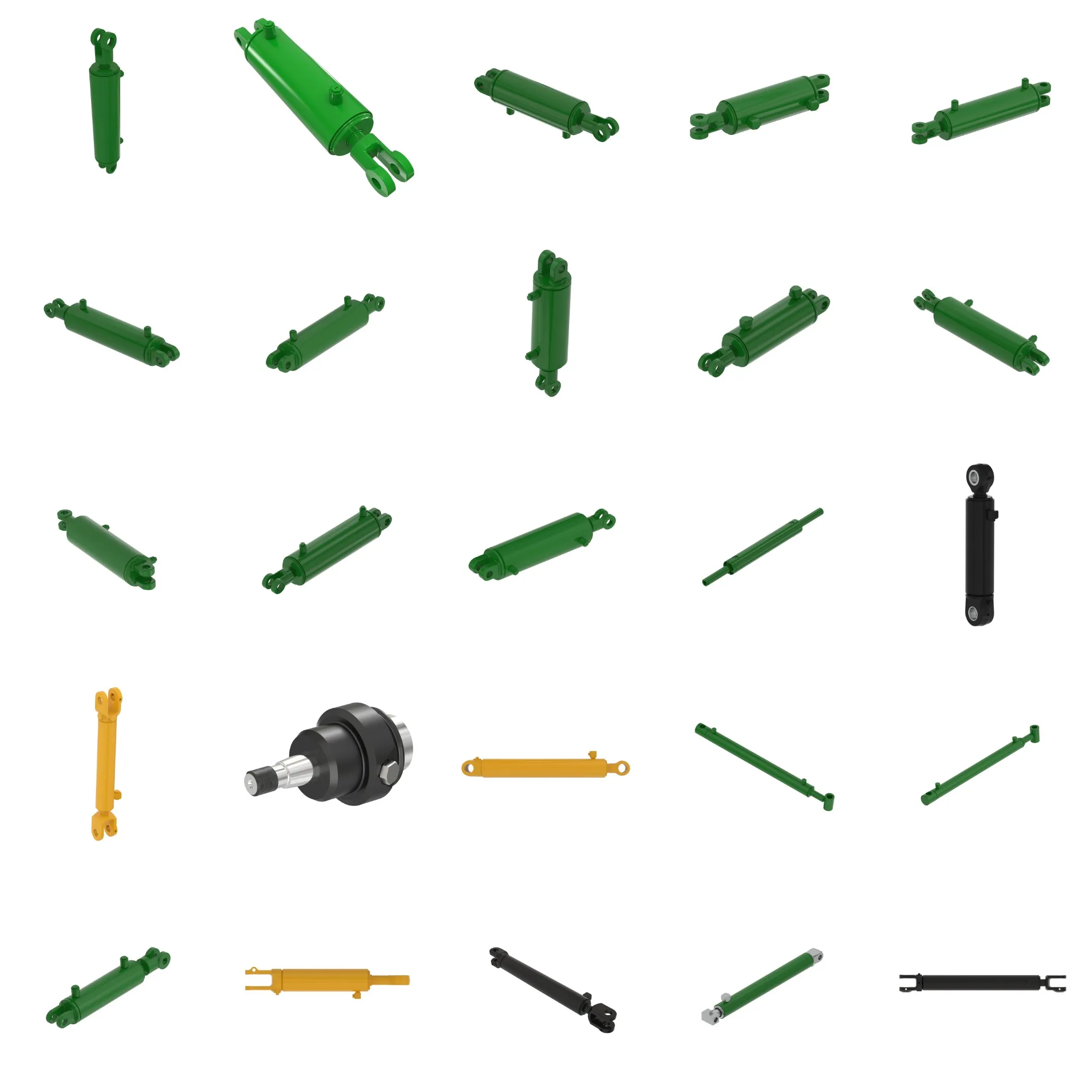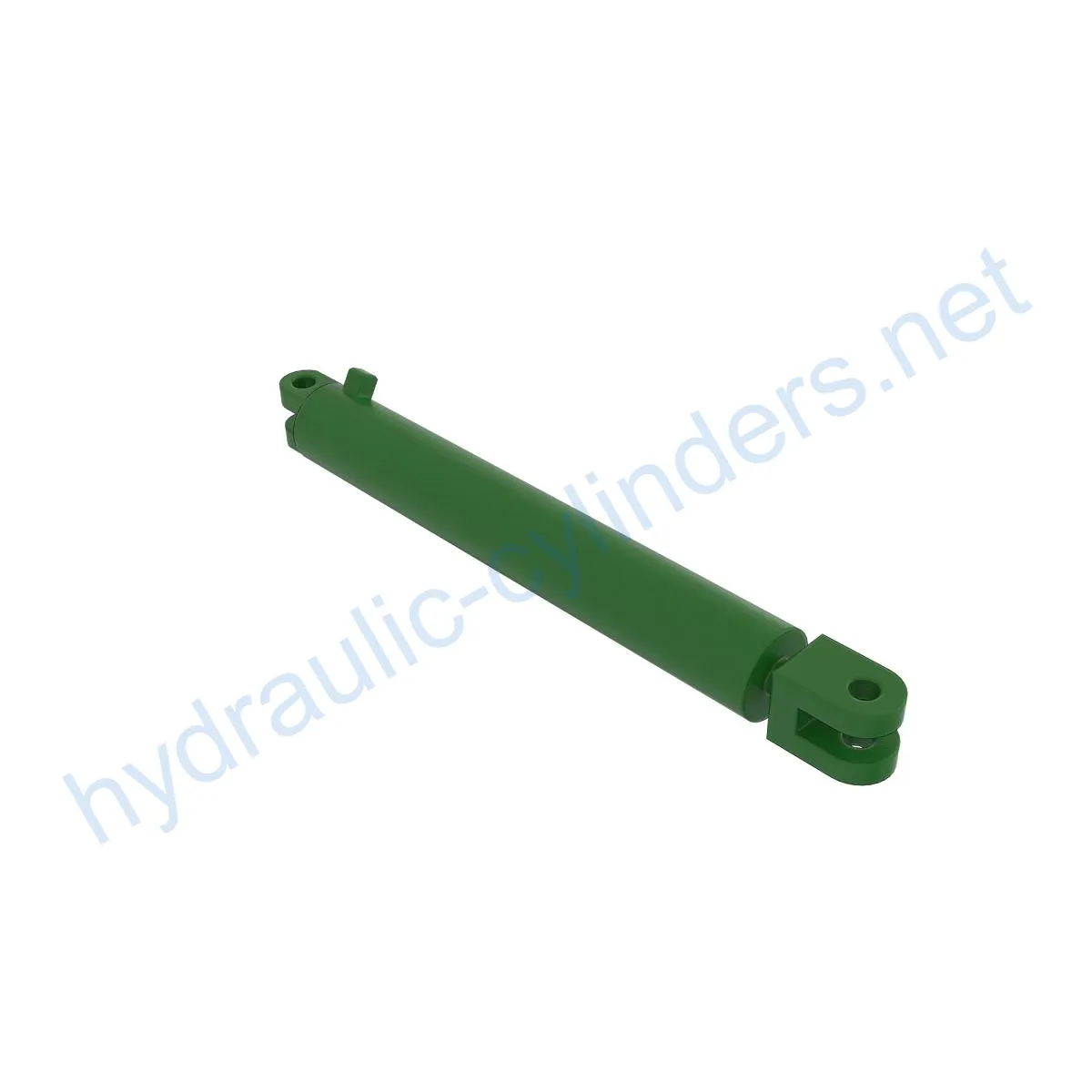Replacement Of AHC21569 Hydraulic Cylinder
유압 실린더 제조업체, 공급 업체 및 기계 제품 수출 업체 중 하나로서 유압 실린더 및 기타 여러 제품을 제공합니다.
자세한 내용은 당사에 문의해 주세요.
메일:sales@hydraulic-cylinders.net
유압 실린더 제조업체 공급 업체 수출.
Replacement Of AHC21569 Hydraulic Cylinder
The Replacement Of AHC21569 Hydraulic Cylinder is a vital component in various types of machinery, such as the M4030, M4040, and M4040DN models. This hydraulic cylinder plays a crucial role in ensuring the proper functioning of equipment by providing the necessary force and control for various applications.
Specifications:
- Weight: 38.832 lb
- Height: 4.409 in
- Length: 30.315 in
Features:
1. Improved Equipment Performance: Replacing damaged or worn hydraulic cylinders can restore the normal operating capability of equipment, ensuring its performance in various applications.
2. Enhanced Safety: Regularly replacing hydraulic cylinders reduces safety hazards caused by cylinder failures, ensuring the safety of operators and equipment.
3. Overload Protection: New cylinder designs often incorporate improved overload protection mechanisms, enhancing safety.
4. Quick Installation: Modern hydraulic cylinders are designed for easy installation and replacement, minimizing downtime.
5. Standardized Components: Many hydraulic cylinders are standardized products, making it easier to obtain replacement parts in the market.
We can produce this product and provide a perfect replacement for these hydraulic cylinders.
Applications:
1. Excavators: The hydraulic cylinder in the boom or bucket of an excavator may get damaged due to prolonged use or overload, requiring replacement to restore proper operation.
2. Cranes: Crane jib hydraulic cylinders can experience wear during frequent lifting and lowering processes, necessitating regular replacement for safety reasons.
3. Tractors: The front-end loader hydraulic cylinders on tractors may develop leaks or decreased performance due to continuous lifting and tilting operations, requiring replacement.
(Additional application scenarios and descriptions available upon request)
Maintenance Tasks:
1. Regular Inspection: Periodically inspecting the hydraulic cylinder ensures early detection of any issues and allows for timely repairs or replacements.
2. Proper Lubrication: Applying appropriate hydraulic oil lubrication can improve the lifespan and performance of the cylinder.
3. Seal Replacement and Calibration Check: Regularly replacing seals and checking calibration is essential to maintain optimal performance. During installation, providing proper guidance for aligning the cylinder and using suitable mounting brackets to secure it is recommended. We offer recommended inspection, repair, and replacement procedures, as well as replacement parts and rebuilding services to enhance the lifespan of the hydraulic cylinder.
Safety Considerations and Environmental Factors:
When working with hydraulic cylinders, ensuring proper safety measures is crucial to prevent accidents and injuries. The use of appropriate safety precautions when handling the cylinders and following environmental regulations is imperative to protect both personnel and the environment.
Fault Diagnosis and Common Issues:
1. Leakage: If the hydraulic cylinder experiences fluid leakage, it may indicate a damaged seal or worn-out components.
2. Performance Degradation: Decreased performance, such as reduced lifting capacity or slower operation, may be a result of internal wear or damage to the cylinder.
3. Abnormal Noises: Unusual sounds during cylinder operation can indicate mechanical issues or misalignment.
(Additional fault diagnosis and common issues available upon request)
We provide troubleshooting tips, solutions, and preventive measures to help readers effectively diagnose and resolve problems related to hydraulic cylinders. By implementing these measures, potential issues can be minimized, ensuring smooth operation.

Design Considerations and Selection Criteria:
When selecting a hydraulic cylinder, it is important to consider factors such as load-bearing capacity, sealing capabilities, durability, safety features, and ease of maintenance. Each of these aspects contributes to the overall performance and longevity of the cylinder.
Sealing and Lubrication:
The hydraulic cylinder employs various sealing components, including piston seals and rod seals, using wear-resistant materials such as polyurethane and nitrile rubber. The cylinder body and threaded end surfaces undergo precise treatment to enhance wear resistance. Regular lubrication with the appropriate amount of hydraulic oil is necessary to ensure smooth operation.
Regular Inspection and Preventive Maintenance:
By implementing regular inspections and preventive maintenance tasks, including proper installation, lubrication, and adjustment, the lifespan of the hydraulic cylinder can be significantly extended. Providing accurate installation guidelines and recommending the use of suitable installation brackets to secure the cylinder are essential. We offer recommended inspection, repair, and replacement procedures, as well as replacement parts and rebuilding services to enhance the lifespan of the hydraulic cylinder.
Installation Guide:
For a successful installation, follow these steps:
- Ensure the mounting surface is clean and free of debris.
- Align the hydraulic cylinder correctly with the equipment.
- Secure the cylinder using appropriate mounting brackets.
- Connect the hydraulic hoses and fittings according to the equipment’s specifications.
- Perform a test operation to ensure proper functionality.
Maintenance Tasks:
1. Regular Inspection: Periodically inspect the hydraulic cylinder to detect any issues early and perform timely repairs or replacements.
2. Proper Lubrication: Apply the recommended amount of hydraulic oil for lubrication to improve cylinder performance and longevity.
3. Seal Replacement and Calibration Check: Regularly replace worn seals and check the calibration to maintain optimal performance. We offer recommended inspection, repair, and replacement procedures, as well as replacement parts and rebuilding services to enhance the lifespan of the hydraulic cylinder.
Safety Considerations and Environmental Factors:
When handling hydraulic cylinders, adhering to safety precautions is essential to prevent accidents and injuries. It is important to follow proper safety procedures and consider environmental factors to protect both personnel and the environment.
Fault Diagnosis and Common Issues:
Fault diagnosis and troubleshooting for hydraulic cylinders involve identifying issues such as seal leaks, insufficient force, abnormal noises, or uneven movements. By accurately diagnosing these problems, effective solutions can be implemented to resolve them.
We provide fault handling tips, troubleshooting methods, and preventive measures to assist readers in diagnosing and solving issues effectively. By following these guidelines, potential problems can be minimized, ensuring the smooth operation of the hydraulic cylinder.

About Our Company
We are a leading manufacturer and wholesale distributor of replacement hydraulic cylinders, offering a comprehensive range of products for domestic and international markets.
Our company stands out in the industry due to the following factors:
- Professionalism: Our team consists of experienced experts in the field of hydraulic cylinders, ensuring top-notch quality and service.
- International Certifications: Our products meet international quality standards and certifications, guaranteeing reliability and performance.
- Customization Services: We provide customized solutions to meet specific customer requirements.
- Advanced Production Equipment: Our state-of-the-art production equipment enables efficient manufacturing processes
Take a Tour of Our VR Factory:
Take a tour of our VR factory with the following
Hydraulic Cylinder Application:


